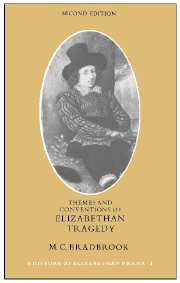Book contents
3 - CONVENTIONS OF ACTION
Published online by Cambridge University Press: 08 January 2010
Summary
For critical convenience the drama may be divided into presentation, action and speech. The presentation covers all that pertains to any actual performance, and has been discussed in the preceding chapter. The speech, which will be considered in the following chapters, covers the whole of the dialogue seen as a poem, or as literature. From these two halves rises the action, which is the plot in the Aristotelian sense, or narrative and character taken together. It is only for critical convenience that a play may be taken to pieces in this manner, but if the arbitrary nature of the division is recognised, there should be little danger of considering the results as anything but equipment for the final critical judgment. In this chapter the action will be isolated for analysis: it would seem simpler to deal first with narrative and then with character.
The story of most Elizabethan tragedies is either too simple, or too complex, judging by modern standards. In Tamburlaine, the Byron plays, Sejanus and Catiline, there is little action, and what there is seems monotonous: in The Revenger's Tragedy and Women Beware Women there is so much that the reader can hardly grasp it at first reading. The minor plays of the period go further to one or the other extreme; on the one hand there are the classical tragedies of Daniel and Stirling and, on the other, The Jews' Tragedy or Mulleasses the Turk.
- Type
- Chapter
- Information
- Themes and Conventions of Elizabethan Tragedy , pp. 29 - 68Publisher: Cambridge University PressPrint publication year: 1980

